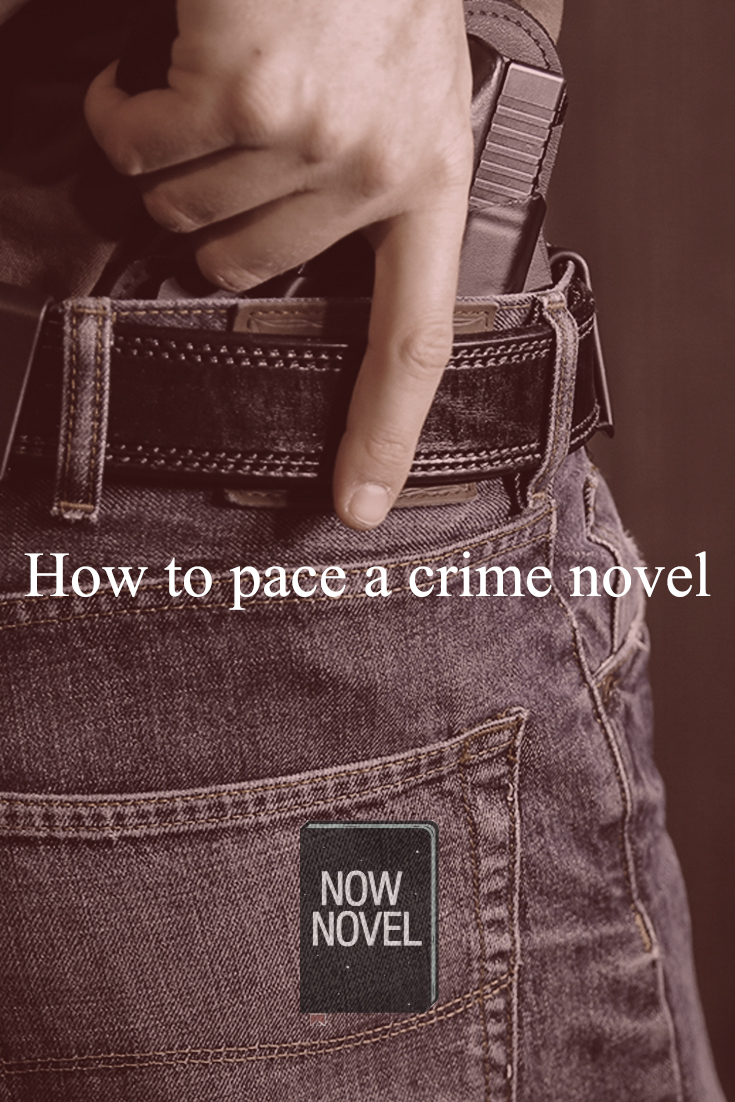If you want to write gripping, gritty police procedurals or other crime fiction, knowing how to pace a crime novel is essential. An effective crime novel must keep the reader turning pages while revealing enough information to make the narrative flow at a cracking pace. Here are some suggestions for pacing your crime novel, as well as pitfalls to avoid:
The info dump
In an info dump, you give the reader a block of information all at once. Often it is more information than the reader can take in and remember for later developments.
Nearly always, info dumps stop the action of a story and feel as though the writer is being intrusive and even condescending (‘my reader is too dumb to fill in the gaps’ might seem like the writer’s attitude).
Sometimes, you may need to resort to the info dump while writing a first or discovery draft, as the details you include can be a reminder to yourself to deliver key information at specific stages of your story. If you do leave these chunks of expository information in temporarily, be sure to clean these up and integrate the information more seamlessly into your story when writing subsequent drafts.
‘As you know, Bob’ dialogue
Even worse than the typical info dump is the info dump delivered via dialogue.
You will encounter this sometimes in film, television and novels when characters use these exact words to introduce a piece of information: “Well, as you know, Fred, the deceased was hated by many people in town.” In its subtler form, the ‘as you know’ phrase is left out, but one character is still telling another character something that both already know.
The ‘as-you-know’ is not always an info dump: it may deliver only limited bits of useful information, but it should still be avoided. It’s an awkward and contrived way of delivering information because it is clearly for the audience’s benefit. Having one character tell another character something can be a great way of relaying important facts to the reader as well, but it needs to be in a realistic scenario and conversation instead of a contrived, forced-sounding one.
Too much front-loading of backstory
This is not the same thing as an info dump. An info dump is a lot of information in one paragraph or short section, whereas giving too much information up front may involve stretching this information across an entire chapter or two. It will still be too much for the reader to take in at once. Pace your novel effectively by revealing just a little bit at a time and allowing the reader to take in any new facts and key plot developments before moving on to more.
Too little payoff
Make sure you are giving the reader rewards along the way. If you are too stingy with your information reveals or if the information you share isn’t all that interesting or revelatory, your reader will grow impatient.
Crime fiction is not just about how you deliver information, however. A crime novel may not be particularly action-oriented always, but it still has elements of action and other incidents that build the plot and drive it forward. Structure is vital to effective pacing in a crime novel. Whether you tend to write detailed outlines, make a few notes ahead of time or write with no outline at all, you will need to think about structure as you work on your story and decide how to pace a crime novel that will satisfy readers.
There are some common pitfalls with placement of narrative incidents to avoid as well:
Be careful about starting with a bang
This seems counter-intuitive since all writing advice says you need to grab the reader’s attention from the very beginning. You do, but some writers interpret this as meaning that every novel or scene should begin with chaotic action. Readers won’t be engaged with characters they don’t care about yet, thus they might not be as invested in whether your protagonist makes it out of a risky situation alive or not.
Beginning with a gunshot or a chase scene or something similar is not necessarily a ticket to immediate reader involvement, and can also make what follows feel anticlimactic. If handled with skill, beginning in the thick of action (in medias res) can work – you should have a purpose for doing so, at least.
Solving problems too easily
It may sound formulaic, but the tried-and-true rule of threes is a valid principle to fall back on to create effective pacing that creates rising tension. In this story structure, a character makes two unsuccessful attempts (followed by a third successful attempt) to solve a problem. You don’t have to adhere to the exact number, but thinking about the rule of threes will help you remember to give your characters multiple hurdles rather than make the solving of a crime too easy. Keeping events of tension/conflict and resolution going is especially important when writing a crime series.
Revealing the answer too early
Be sure that whether your crime story revolves around the identity of the perpetrator or the reason for the crime you do not reveal so much that your reader is able to predict the end easily. Play fair with your readers, but scatter red herrings as well to keep them guessing. A red herring is a character or story event that seems significant but is only there to distract the reader from the main reveal. The cult classic TV series Twin Peaks, about a small town murder, provides many excellent examples of red herrings and its writers stacked up suspense throughout the series’ first season especially well.
With the above potential pacing pitfalls in mind, you can begin to structure your crime novel around the skillful release of information. Use these pointers to create a satisfying narrative that leads the reader and your characters to your story’s resolution at an effective pace.
What are some of your favourite crime novels that show how to pace a crime novel expertly? Tell us in the comments below.



